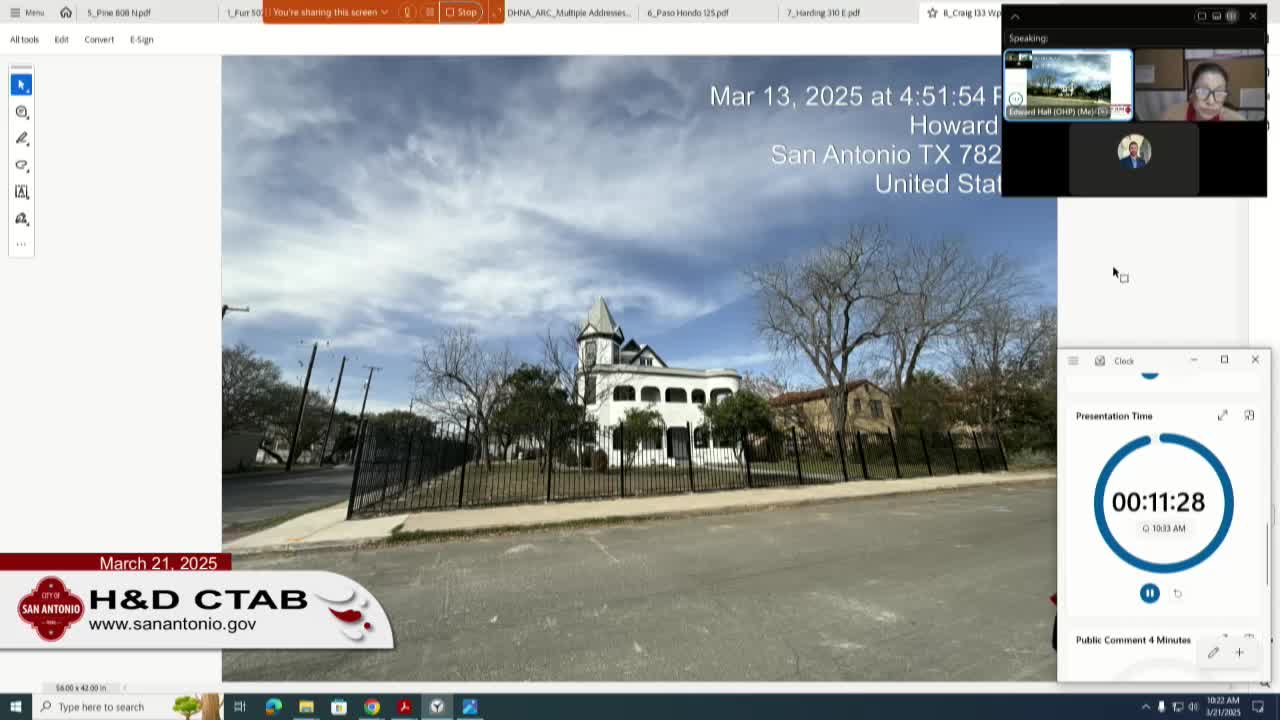Property Owner appeals for fence variance amid rising crime in Montevista area
March 21, 2025 | San Antonio, Bexar County, Texas
This article was created by AI summarizing key points discussed. AI makes mistakes, so for full details and context, please refer to the video of the full meeting. Please report any errors so we can fix them. Report an error »

In a recent meeting of the Historic Compliance and Technical Advisory Board in San Antonio, discussions centered around a multifamily property that has raised concerns due to a recent spike in local crime. The property, built in 1950, stands out in its neighborhood for its three-story structure, contrasting with the predominantly two-story buildings surrounding it.
The property owner, represented by an attorney, highlighted the necessity of a newly constructed metal fence around the premises, which was erected following an increase in thefts. The attorney explained that the fence, while aesthetically open and not obstructive, was crucial for the safety of the residents, including the owner and his wife, who have experienced genuine fears due to the rise in criminal activity.
During the meeting, the attorney presented photographs of similar properties in the area, many of which feature fences of comparable height or greater, suggesting that the new fence aligns with local architectural norms. He emphasized that the fence does not obstruct views and is consistent with the character of the neighborhood.
The discussion also touched on the potential financial burden that modifications to the fence could impose on the property owner. The attorney argued against any drastic changes, stating that such alterations would require significant costs and structural adjustments, which could be burdensome for the owner.
As the meeting progressed, board members were invited to ask questions, indicating a collaborative approach to addressing the concerns raised. The attorney's plea for a variance to maintain the current fence structure reflects a broader issue of balancing safety and community aesthetics in urban settings.
This meeting underscores the ongoing challenges faced by property owners in San Antonio, particularly in areas experiencing increased crime, and highlights the importance of community dialogue in finding solutions that prioritize both safety and historical integrity.
The property owner, represented by an attorney, highlighted the necessity of a newly constructed metal fence around the premises, which was erected following an increase in thefts. The attorney explained that the fence, while aesthetically open and not obstructive, was crucial for the safety of the residents, including the owner and his wife, who have experienced genuine fears due to the rise in criminal activity.
During the meeting, the attorney presented photographs of similar properties in the area, many of which feature fences of comparable height or greater, suggesting that the new fence aligns with local architectural norms. He emphasized that the fence does not obstruct views and is consistent with the character of the neighborhood.
The discussion also touched on the potential financial burden that modifications to the fence could impose on the property owner. The attorney argued against any drastic changes, stating that such alterations would require significant costs and structural adjustments, which could be burdensome for the owner.
As the meeting progressed, board members were invited to ask questions, indicating a collaborative approach to addressing the concerns raised. The attorney's plea for a variance to maintain the current fence structure reflects a broader issue of balancing safety and community aesthetics in urban settings.
This meeting underscores the ongoing challenges faced by property owners in San Antonio, particularly in areas experiencing increased crime, and highlights the importance of community dialogue in finding solutions that prioritize both safety and historical integrity.
View full meeting
This article is based on a recent meeting—watch the full video and explore the complete transcript for deeper insights into the discussion.
View full meeting
